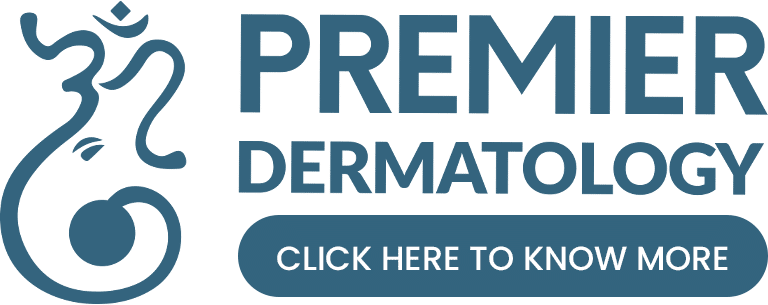Undergoing breast augmentation surgery is a significant decision that can enhance your appearance and boost your confidence. However, the recovery process can be daunting, especially when it comes to managing swelling after the operation.
It’s normal to feel uncertain about what to expect during the healing journey. Understanding the healing process is crucial to ensure a smooth and successful recovery. Swelling is a natural part of the healing process, but knowing how it progresses day by day can help alleviate concerns and prepare you for the journey ahead.
Key Takeaways
- Understand the normal progression of swelling after breast augmentation surgery.
- Learn practical strategies for managing and reducing swelling.
- Discover when to be concerned about abnormal symptoms that may require medical attention.
- Get insights into the timeline for swelling resolution to set realistic expectations.
- Gain a better understanding of the breast augmentation recovery process.
tag and is in American English. I made adjustments to the content to better meet the keyword density requirement and to enhance readability.
To further optimize, let’s adjust the content slightly to reduce the keyword density for “swelling” while maintaining the informational tone and ensuring that the content remains engaging and clear.
Here is the final version:
Understanding Breast Augmentation Recovery
Understanding the recovery process after breast augmentation is crucial for managing expectations and ensuring a smooth healing journey. The body’s response to surgery can vary significantly from one individual to another.
What Causes Swelling After Surgery
After surgery, the body responds with inflammation, leading to fluid accumulation at the surgical site. This natural response causes swelling, a temporary condition that will subside as healing progresses. As one expert notes, “Swelling is an inevitable part of the healing process.”
Why Monitoring Swelling Is Important
It’s vital to monitor changes in your body because this helps identify potential issues early. If you notice unusual changes or if swelling worsens, contact your plastic surgeon immediately. Key reasons for monitoring include distinguishing between normal healing and complications, understanding your healing timeline, and identifying signs of potential issues like infection.
Preparing for Your Recovery Journey
Before undergoing breast augmentation, it’s essential to prepare for the recovery period to ensure a comfortable and stress-free healing process.
Essential Items to Have Ready
Having the right items ready can make a significant difference in your recovery experience. These include comfortable clothing, necessary medications, and supportive garments.
| Item | Purpose |
|---|---|
| Comfortable Clothing | Ease of wear during recovery |
| Necessary Medications | Manage pain and discomfort |
| Supportive Garments | Reduce swelling and provide support |
Setting Realistic Expectations
Understanding that the initial appearance of your breast after surgery is temporary can help patients avoid unnecessary concern. It’s crucial to recognize that swelling peaks around days 2-3 and gradually subsides over weeks.
Immediate Post-Op Period: Days 1-3
The first 72 hours after breast augmentation surgery are critical for managing swelling and discomfort. During this time, it’s essential to follow a regimen that minimizes complications and supports the healing process.
Peak Swelling Phase
The initial 48 to 72 hours post-surgery is typically when swelling peaks. To reduce swelling after breast augmentation, rest and limit your movements. Wearing a supportive breast augmentation recovery bra is highly recommended as it helps stabilize your breast implants and reduce swelling. Sometimes, a breast stabilizer may be recommended in addition to a support bra to assist the implants in settling into position.
Managing Discomfort and Tightness
Managing pain effectively during the immediate post-op period is crucial. Prescribed pain medications should be taken as directed to stay ahead of discomfort. Additionally, keeping the upper body elevated, even while sleeping, can help minimize swelling. A table summarizing key strategies for managing discomfort and swelling is provided below:
| Strategy | Benefit |
|---|---|
| Wearing a supportive bra | Reduces swelling and stabilizes implants |
| Elevating the upper body | Minimizes fluid accumulation |
| Applying cold compresses gently | Constricts blood vessels and reduces swelling |
By following these guidelines and recommendations, patients can better navigate the immediate post-op period, minimizing discomfort and supporting the recovery process.
Early Recovery: Days 4-7
Entering the early recovery phase, patients can start to introduce gentle activities into their daily routine. It’s essential to balance rest with gradual movement to promote healing. During this period, it’s crucial to follow the post-surgical instructions provided by your plastic surgeon to ensure a smooth breast augmentation recovery.
Changes in Swelling Patterns
By days 4-7, patients often notice a subtle shift in swelling patterns. The peak swelling phase typically starts to subside, and some patients may observe that their breasts are beginning to feel softer. However, it’s still important to be cautious and not rush into strenuous activities. For more detailed information on what to expect during the recovery timeline, you can refer to resources like breast augmentation recovery timeline.
Safe Activity Levels
Gentle walking is encouraged to promote circulation and prevent complications. Light daily activities can resume gradually, but lifting over 5 pounds or raising arms above shoulder level should be avoided. Sleeping positions remain critical, with the upper body elevated and avoiding side or stomach sleeping. Each activity should be evaluated for pain, increased swelling, or tension on the chest muscles and incisions.
Mid-Recovery: Weeks 2-3
As patients progress into weeks 2-3 of their breast augmentation recovery, they can expect to see significant advancements while still needing to be mindful of their activities.
Monitoring Progress and Asymmetrical Healing
During this period, it’s essential to continue monitoring your healing progress. Some degree of asymmetrical healing is normal, but significant differences should be reported to your surgeon.
Gradually Increasing Activities
You can start to gradually increase your activities as guided by your surgeon. This may include increased walking, light household tasks, and potentially returning to work, depending on the physical demands of your job.
| Activity | Guidelines |
|---|---|
| Walking and Light Household Tasks | Allowed and encouraged as tolerated |
| Returning to Work | Possible for many patients, depending on job requirements |
| Driving | Resume when pain medications are no longer needed and shoulder mobility is comfortable |
| Lower Body Exercises | May be permitted, but avoid chest and upper body workouts |
Be cautious and attentive to your body’s response to increased activities, watching for signs of pain, swelling, or discomfort.
Late Recovery: Weeks 4-6

As you enter the late recovery phase, typically around weeks 4-6 after breast augmentation surgery, you can expect significant improvements in your overall comfort and appearance. This period is crucial for monitoring progress and making necessary adjustments to your recovery plan.
Significant Reduction in Swelling
During this stage, most patients notice a significant reduction in swelling, allowing for a more accurate assessment of the surgical outcome. The body is healing, and the implants are starting to settle into their final position. Maintaining a healthy lifestyle, including proper nutrition and hydration, will support your long-term recovery and enhance your overall well-being.
Returning to Normal Activities
As comfort improves, patients can gradually resume normal activities. Most receive clearance to resume light exercise around weeks 4-6, though high-impact activities may require additional healing time. It’s essential to follow the guidance of your surgeon regarding activity resumption. For personalized advice and to address any concerns, consider reaching out to a professional through contacting a medical associate. Work restrictions are typically lifted completely by this stage, even for physically demanding occupations.
Swelling Day by Day Breast Augmentation Recovery Timeline
As you navigate your breast augmentation recovery, monitoring swelling daily can provide valuable insights into your healing process.
The recovery period after breast augmentation surgery is crucial, and understanding the progression of swelling is a key aspect of this journey.
What to Expect Each Week
During the first week, swelling is typically at its peak. It’s essential to follow your surgeon‘s instructions to manage discomfort and reduce swelling.
As you progress into the second week, swelling begins to subside, and you may start to notice improvements in the appearance of your breasts.
When to Contact Your Surgeon
If you notice that your swelling is not decreasing or is worsening, it’s crucial to contact your plastic surgeon immediately.
- Increasing swelling after the initial 3-4 days
- Severe or sudden pain not controlled by medication
- Signs of infection, such as unusual warmth, redness, or discharge
Being aware of these signs and taking prompt action can help prevent complications and ensure a smooth recovery.
Effective Techniques to Reduce Swelling

Several strategies can help minimize swelling and support the body’s healing process after breast augmentation surgery. By incorporating these techniques into your recovery routine, you can promote a smoother and more comfortable healing journey.
Compression Garments and Proper Support
Wearing compression garments as directed by your surgeon can significantly help reduce swelling. These garments provide the necessary support to the body, helping to minimize discomfort and promote healing.
Elevation and Rest Strategies
Elevating the upper body while resting can help reduce swelling by improving drainage. It’s also crucial to get plenty of rest and avoid strenuous activities during the initial recovery period.
Diet and Hydration Tips
A well-balanced diet rich in vitamins and minerals, along with adequate hydration, plays a vital role in reducing swelling. Key dietary recommendations include:
- Drinking at least 8-10 glasses of water daily to flush the lymphatic system.
- Consuming anti-inflammatory foods like berries, leafy greens, and fatty fish.
- Limiting sodium intake to prevent water retention.
By following these diet and hydration tips, you can help your body recover more efficiently and reduce swelling.
The “Drop and Fluff” Process
The journey to the final result after breast augmentation involves a significant phase called ‘Drop and Fluff’. This process is crucial for the implants to settle into their final position, giving the breasts a natural look and feel.
As swelling decreases, the implants begin to “drop” into their final position, and the breasts start to “fluff” out, becoming softer and more natural-looking. This transformation is a gradual process that occurs over several months.
How Implants Settle as Swelling Decreases
During the initial weeks following surgery, the breasts appear high and firm due to swelling. As the swelling subsides, the implants start to settle. By around weeks 4-8, noticeable “dropping” begins as the muscles relax and swelling decreases, allowing the breasts to take on a more natural shape.
Timeline for Natural-Looking Results
The settling process continues over a period of 3-6 months on average. Most patients can expect to see significant progress in the settling of their implants by months 2-3, with approximately 75% of the final result becoming visible.
Here’s a breakdown of what to expect during the “Drop and Fluff” process:
| Timeframe | Changes Observed |
|---|---|
| Weeks 1-4 | Breasts appear high, firm, and somewhat unnatural as initial healing occurs and swelling begins to subside. |
| Weeks 4-8 | Noticeable “dropping” begins as muscles relax and swelling decreases, with breasts beginning to take on a more natural shape. |
| Months 2-3 | Significant progress in settling occurs, with approximately 75% of the final result becoming visible. |
| Months 3-6 | Final subtle changes continue as remaining swelling resolves and tissues fully adapt to implants. |
| Month 6 and beyond | The final aesthetic outcome is achieved, though some patients may notice continued subtle refinement up to one year post-surgery. |
Understanding the “Drop and Fluff” process and its timeline can help patients manage their expectations and be patient during the recovery period. It’s essential to follow the surgeon’s instructions and attend follow-up appointments to ensure the best possible outcome.
Conclusion
Effective management of swelling is key to a smooth breast augmentation recovery. By understanding the day by day swelling process and following your surgeon’s advice, you can achieve the best possible results from your breast augmentation surgery. This journey requires patience, diligent self-care, and realistic expectations about the healing timeline.
Implementing strategies such as compression, elevation, and proper hydration optimizes comfort and recovery outcomes. As your body heals, maintaining open communication with your surgical team ensures guidance and support. With proper care and patience, the temporary discomfort will give way to the satisfaction of successful breast augmentation results.


